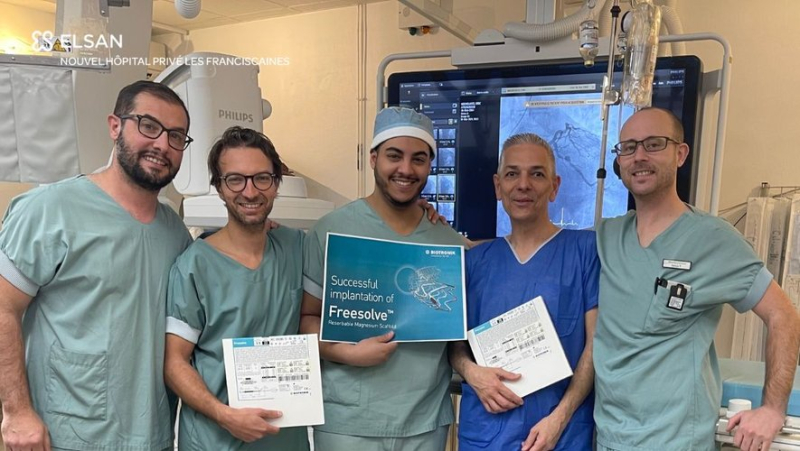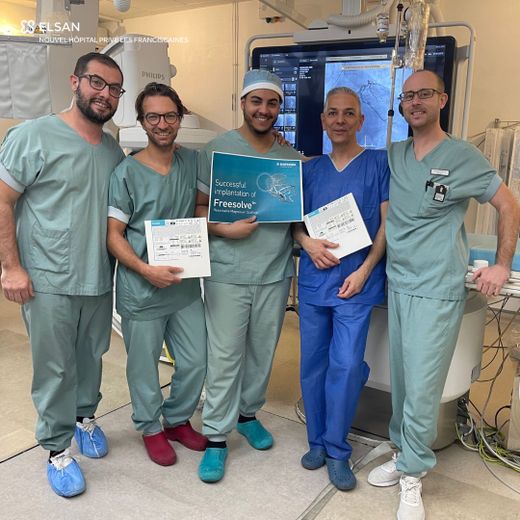French first at the Les Franciscaines private hospital in Nîmes: installation of a magnesium stent which is resorbed


Une intervention réalisée par les docteurs Tadros et Maupas, cardiologues interventionnels.
La première pose d’un stent en magnésium qui se résorbe naturellement en totalité un an après son implantation révolutionne la cardiologie interventionnelle.
This is a 50-year-old patient who benefited this week from the Franciscans of the first installation in France of a latest generation magnesium stent, carried out by the doctors Tadros and Maupas, interventional cardiologists. This is a second in the world, after Germany which has already started this type of intervention.
The stent is used to unblock the arteries and prevent the risk of coronary heart diseases such as myocardial infarction or angina. But the Freesolve is not a classic stent, it’s a prop. It is even the first bioresorbable magnesium strut, which offers an alternative to traditional metallic coronary stents.
"No foreign body permanently in the artery"
Indeed, after a year, it is resorbed, without toxicity, freeing the artery from any metallic involvement. Unlike traditional metal stents, which remain in the artery ad vitam aeternam, the Freesolve allows all subsequent treatment options to be considered.
"By preventing a foreign body from permanently remaining in the artery, this improves its remodeling but also allows the stabilization of the plaques of cholesterol by modifying their structures and facilitates possible
reinterventions such as a bypass or a new stent placement…", specify the doctors.

A bioresorbable magnesium stent in one year.
The Freesolve is mainly intended for patients who have a particular benefit from receiving a bioresorbable strut. It can for example be used for young patients likely to progress and require multiple stent implantations, thus avoiding a complete metal reconstruction of the arteries.
It is also suitable for patients with atherosclerotic plaques said to be at high risk of complications.




